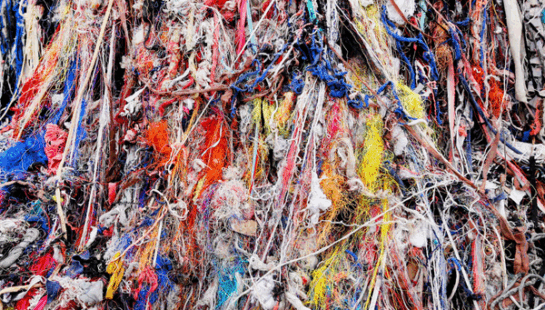True Cost Of A Cup Of Coffee
For many of us, drinking coffee is a reflex we don’t think twice about: a habit tightly woven into our daily routine. We grab takeaways at work, order cups of the stuff while scrolling through our phones in hole-in-the-wall cafés, flick our espresso machines on each morning, bleary-eyed, in anticipation of the caffeine hit to come.
But how often do we ask where our coffee comes from? With 2.25 billion cups of coffee consumed around the world each day, do the people who produce our coffee—the farmers, skilled workers and their families—actually reap the benefits?
Where Does Coffee Come From?
The origin of coffee belongs in the realm of myth and folklore. The story goes that an Ethipoan goatherder names Kaldi nibbled on some berries and noticed that they had a pleasingly invigorating effect. And so, the delights of coffee spread far and wide and they all lived enthusiastically ever after.
Most coffee is grown in in the ‘Bean Belt’ of Central and South America, Africa, the Middle East, and Asia. Coffee plants grow up to 10 metres tall, and they take about 3-5 years to start producing cherries. When perfectly ripe, cherries are picked by workers, and processed to release the seed inside. The seeds are then laid out in the sun or dried by using mechanical driers—if this is not done fast enough, or weather is adverse, the seeds can ferment and the farmer can lose a year’s crop. After drying, coffee seeds become known as ‘green beans’ and are packaged and shipped off around the world where they will be roasted, ground and brewed into our much-loved beverage.
Are Workers Compensated?
Ask Jairo Arcila this question, and he’ll tell you that many coffee growers in his native Colombia do not receive a fair price for their work. Now running an international coffee business called Cofinet, Jairo’s family has been farming coffee for 80 years in Quindio, a mountainous region in the country’s central west. Each step requires great care, from harvesting the cherries by hand when they start to blush deep shades of crimson and purple, to meticulously processing the beans to bring out their unique flavour. The Arcila family’s prized Geisha coffee, for example, is notoriously hard to grow and requires three times more labour resources compared to other varietals. But Jairo believes it’s worth it: Geisha coffee not only has an incredibly complex flavour, but creates employment opportunities for the local community. ‘In Colombia, coffee is picked by hand, so it’s very labour-intensive work,’ says Jairo. ‘A lot of hands go into every single bean, every cup.’
You might have noticed that the price of your flat white has increased along with most things. But that doesn’t mean everyone in the supply chain is benefiting—at times, coffee producers sell their product for less than it costs to produce it because they are restricted by markets. Coffee is currently fetching around $2 US per pound on the international commodities market, and while cafés and roasters can increase their prices for consumers, farmers have far less freedom to set prices, so they continue to see little income from their labour.
Can Consumers Enjoy An Ethical Cuppa?
Yes. There is an increasing appetite among consumers for single origin, high quality beans based on direct trade: a system where roasters or specialty importers/exporters like Cofinet build direct relationships with farmers and buy beans straight from the source, usually at a premium.
This has huge benefits for farmers. While prices on the Intercontinental Exchange can drop due to oversupply, direct trade offers a way for farmers to sell their beans for a higher price that’s based on the true value of their crop. Jairo is a prime example. He sells close to 40 per cent of his harvest through Cofinet, which processes the cherries using alternative fermentation techniques, and helps Jairo build long-term relationships with buyers. For that 40 per cent, Jairo is paid double the amount he would receive if he took his crop to market. He is also now producing more exclusive varietals with better flavour profiles.
Benefits To Direct Trading
As well as increased profits which then result in better paid workers, the relationship between the buyer and the farmer can include support. Depending on needs, this may mean technical training, or provision of equipment to make the process more efficient and less unnecessarily arduous for the growers.
Logistics is another area where traders can help—MTC Sucafina work with remote coffee growers in Papua New Guinea that live a three-day hike away from the closest city. The company helped the farmers to build economies of scale, then hired a plane to fly their beans to the nearest port. ‘We pay what the crop is worth, and help farmers by investing in projects that’s going to provide them with a more sustainable income stream over the years,’ says Ross.
Choose Your Coffee Wisely
Consumers should be cautious though—paying more for a bag of beans or a flat white doesn’t always guarantee an ethical supply chain, especially as the specialty coffee direct trade industry is currently unregulated. ‘There are many companies out there that put the prices up, but don’t pass that on to suppliers and their farmers,’ says Jairo’s son Carlos. ‘It has to be a conscious and ethical chain so consumers pay for something that is really helping our people, not just making more money in the middle while the farmers don’t get any benefits.’
This article originally appeared on Medium on 26 September 2019 and was last updated 12 August 2024.



 Keziah Redelinghuys,
Keziah Redelinghuys,
